1 of 25
Download to read offline
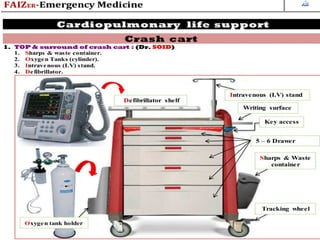
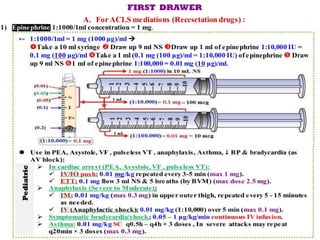


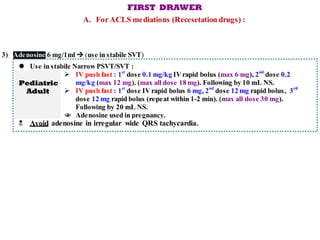
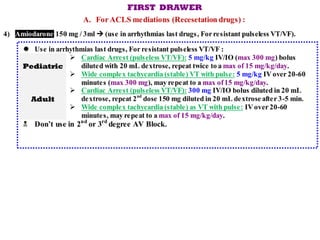
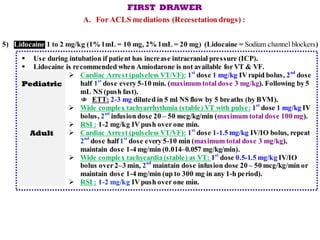
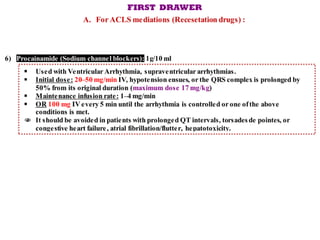
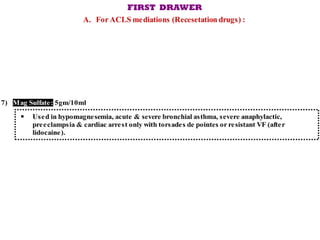
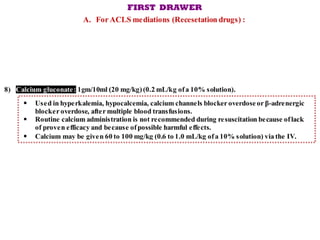
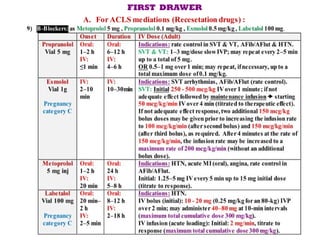

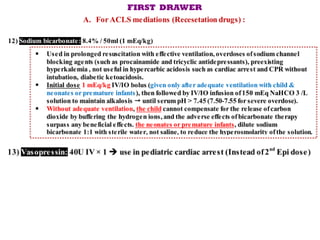
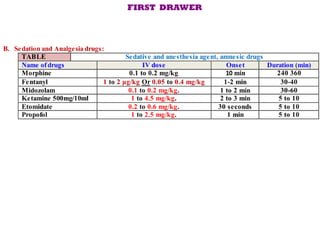
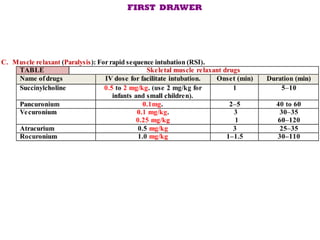

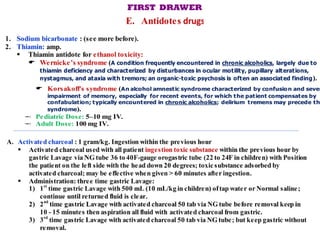
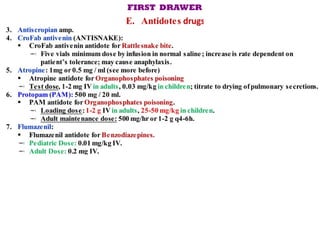
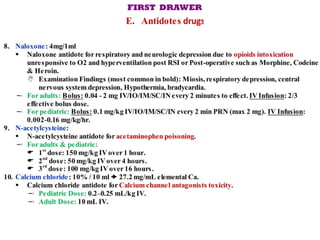
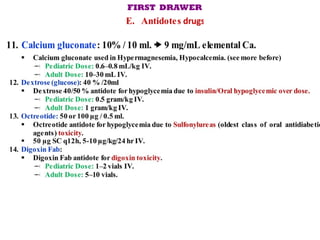

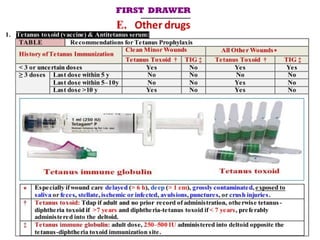


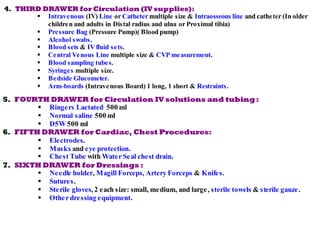
Ad
Recommended
Ascaris, Enterobius, Hookworm and Trichrous 6.ppt
Ascaris, Enterobius, Hookworm and Trichrous 6.pptM H
?
The document outlines various parasitic infections caused by worms, including Ascaris, Enterobius, Ancylostoma, and Trichuris, detailing their life cycles, clinical features, symptoms, diagnostic methods, and treatment options. Infections are primarily asymptomatic but can lead to significant health issues like respiratory problems, gastrointestinal symptoms, and anemia in heavy cases. Effective prevention strategies include improved sanitation, mass treatments, and proper health education.Ascaris, Enterobius, Hookworm and Trichrous 6.ppt
Ascaris, Enterobius, Hookworm and Trichrous 6.pptM H
?
The document provides a detailed overview of various intestinal parasites, their characteristics, modes of transmission, clinical features, laboratory diagnosis, treatment, and prevention. It discusses infections caused by Ascaris lumbricoides, Enterobius vermicularis, Ancylostoma duodenale, and Trichuris trichiura, highlighting symptoms associated with each, such as abdominal discomfort and respiratory issues. Treatment options generally include anthelmintic medications like mebendazole and albendazole, alongside recommendations for improved sanitation and hygiene.Ascaris, Enterobius, Hookworm and Trichrous 6.ppt
Ascaris, Enterobius, Hookworm and Trichrous 6.pptM H
?
The document provides a detailed overview of various intestinal nematodes, including ascariasis caused by Ascaris lumbricoides, enterobiasis from Enterobius vermicularis, hookworm disease from Ancylostoma duodenale, and trichuriasis from Trichuris trichiura. It covers the geographical distribution, life cycle, pathogenicity, clinical features, laboratory diagnosis, and treatment options for these infections. Key treatments include mebendazole, albendazole, and preventive measures focusing on sanitation and hygiene.fluid an dd.ppt
fluid an dd.pptM H
?
The document covers fluid volume disturbances and electrolyte imbalances in the human body, highlighting causes, symptoms, diagnostic evaluations, and management strategies for conditions such as hypovolemia, hypervolemia, hyponatremia, hypernatremia, hypokalemia, and hyperkalemia. It emphasizes the importance of maintaining electrolyte homeostasis for cellular activities, offers detailed information on acid-base balance, and describes various intravenous solutions used for treatment. Additionally, it outlines the roles of body buffer systems in regulating pH levels.fluid a nd.ppt
fluid a nd.pptM H
?
The document provides an overview of fluid compartments, daily fluid intake and output, and the importance of electrolyte balance in the body. It details conditions such as fluid volume disturbances, electrolyte imbalances, and their clinical implications, along with diagnostic assessments and management strategies. Additionally, it discusses various IV solutions and buffer systems that regulate acid-base balance in the body.????? ?? ????????.pptx
????? ?? ????????.pptxM H
?
?????? ??????? ????? ????? ???? ?? ??????? ???????? ??????? ????????? ??? ???? ??? ??? ??????? ?? ????? ??????? ????????? ?????? ?????? ?? ???? ??????? ?????? ?? ???????. ??? ????? ????? ????? ??????? ????????? ???????? ????? ??????? ????? ???? ????? ??????? ???????. ??????? ???? ????? ??? ?????? ??????? ??? ????????? ?????? ????? ????? ????????? ??? ?????? ?? ??????????.?????? ? ????????.pptx
?????? ? ????????.pptxM H
?
?????? ??????? ????? ??????? ????????? ?????? ??????? ???????? ??? ?????? ?????. ????? ??? ??????? ??? ????? ???? ???? ???? ??? ??????? ??????? ???????? ????? ???????? ?? ????? ??????. ???? ??????? ?????? ????? ????? ??????? ????????? ????? ???? ????? ?????? ??????.Chain_of_Infe ction ?? ??.ppt
Chain_of_Infe ction ?? ??.pptM H
?
The document explains the route of transmission for pathogens, detailing methods by which they move from reservoirs to new hosts. Transmission can occur through direct contact, air, or insects. These modes highlight the various ways pathogens can spread.Chain_of_Infecti on ?? ??.ppt
Chain_of_Infecti on ?? ??.pptM H
?
The document outlines the stages of infectious disease transmission, starting with the infectious agent, which is a disease-causing microorganism. It details the reservoir host, where pathogens reside, and the portal of exit, which describes how pathogens leave the host. Finally, it explains the routes of transmission, including direct contact, air, and insects.Chain_of_In fection ?? ??.ppt
Chain_of_In fection ?? ??.pptM H
?
The document outlines the six links in the chain of infection, which include the infectious agent, reservoir host, portal of exit, and route of transmission. It explains that the infectious agent is any disease-causing microorganism, while the reservoir host is the organism that houses these microbes. Additionally, it details how pathogens can exit the reservoir and the various methods through which transmission can occur, such as direct contact and airborne spread.Chain_of_Infe ction ?? ??.ppt
Chain_of_Infe ction ?? ??.pptM H
?
The document outlines the six links in the chain of infection, which include the infectious agent, reservoir host, portal of exit, and route of transmission. It explains that an infectious agent is a disease-causing microorganism, while the reservoir host is where microbes reside. Additionally, the document discusses how pathogens exit and transmit to new hosts through various means such as contact or air.fractu re.pptx
fractu re.pptxM H
?
A fracture is a disruption in bone continuity, classified as open or closed, with varying degrees of tissue damage. Common types include greenstick, transverse, oblique, and spiral fractures, each with distinct characteristics and causes. Treatment options range from conservative approaches like casts to surgical interventions such as internal and external fixation, with complications like infections and bone death being potential risks.fractur e.pptx
fractur e.pptxM H
?
The document discusses the functions and types of bones, as well as fracture classifications and their causes, including the specifics of open and closed fractures. It outlines various treatment methods, including internal and external fixation options, and the complications associated with fractures. Additionally, it emphasizes the importance of prevention through nutrition, physical activity, and awareness of bone health, particularly in aging populations.fractu re.pptx
fractu re.pptxM H
?
The document provides an overview of the musculoskeletal system, including its functions such as protection of organs, support, and mobility. It details types of bone fractures, their classifications, and associated complications, as well as treatment methods like internal and external fixation. Additionally, it discusses prevention strategies for bone health, including nutrition, physical activity, and factors affecting bone density.Geriatric Anesth esia.pptx
Geriatric Anesth esia.pptxM H
?
The document discusses anesthetic techniques for older patients, comparing neuraxial and general anesthesia while considering surgical requirements, patient conditions, and preferences. It highlights the importance of adjusted dosages for anesthetic agents due to age-related physiological changes, and emphasizes the need for careful pain management to mitigate postoperative complications such as delirium and respiratory issues. Additionally, it addresses potential outcomes and recovery challenges faced by older adults undergoing surgery.Geriatric Anesthe sia.pptx
Geriatric Anesthe sia.pptxM H
?
The document outlines anesthetic considerations for older adult patients, emphasizing tailored approaches to anesthesia based on individual health status and surgical contexts. Key points include altered drug sensitivity and metabolism, management of intraoperative fluid and hemodynamics, and pain management strategies to mitigate the risks of postoperative complications. Additionally, the document addresses the increased risks of delirium, functional recovery, and hospital readmission following surgery in this demographic.Geriatric Anesth esia.pptx
Geriatric Anesth esia.pptxM H
?
The document discusses anesthetic techniques and considerations for older patients undergoing surgery, highlighting the need for tailored approaches due to altered drug responses, potential for complications, and pre-existing health conditions. Among the key points are the importance of routine laboratory tests, the careful selection of anesthetic agents, and fluid management strategies to avoid dehydration and hemodynamic instability. It also emphasizes the challenges of postoperative pain management and the risk of complications such as delirium, pulmonary issues, and functional recovery variability in this patient demographic.Geriatric Anest hesia.pptx
Geriatric Anest hesia.pptxM H
?
The document discusses preoperative considerations for older patients undergoing surgery, highlighting that routine chest radiographs and laboratory testing may not be necessary unless specific conditions warrant them. It emphasizes the importance of tailored anesthetic techniques and pain management strategies for older adults, particularly addressing the risks of respiratory and cardiac complications, and outlines recommendations for intraoperative and postoperative care. Additionally, the document notes that advanced age increases the risk of mortality, complications, and delayed recovery, necessitating careful management and monitoring during the perioperative period.Geriatric Anesthesi a.pptx
Geriatric Anesthesi a.pptxM H
?
The document discusses preoperative assessment and anesthesia management for older patients, highlighting the limited value of ECGs and chest radiographs in routine evaluations while emphasizing the importance of carefully tailored anesthetic approaches and fluid management. It outlines risks such as postoperative complications, including cardiac, pulmonary, and renal issues, while noting the increased sensitivity of older adults to certain anesthetics and opioids, necessitating cautious dosing. The document also addresses recovery challenges, including functional recovery and hospital readmission rates in older adults post-surgery.Geriatric An esthesia.pptx
Geriatric An esthesia.pptxM H
?
The document outlines guidelines for preoperative testing and anesthesia considerations for older adults undergoing surgery, emphasizing that routine preoperative testing is generally unnecessary for minor procedures. It highlights the importance of patient-specific factors, such as comorbidities, in determining the need for specific tests and anesthetic choices, as older patients may require tailored approaches to minimize complications. Additionally, it addresses postoperative challenges, including pain management, recovery, and potential complications like delirium and acute kidney injury.Geriatric A nesthesia.pptx
Geriatric A nesthesia.pptxM H
?
The document outlines comprehensive guidelines for the preoperative assessment and management of older patients, emphasizing the importance of evaluating baseline cognitive function and medication history to mitigate the risk of postoperative complications. It highlights that routine preoperative testing is typically unnecessary for minor surgeries, while certain medications must be carefully managed due to age-related pharmacodynamic changes. Additionally, it addresses anesthetic techniques, intraoperative management, and postoperative care, stressing risk factors for mortality, pulmonary and cardiac complications, and the variability in functional recovery among older adults.Contribution of Remittance in Nepalese Economy.pdf
Contribution of Remittance in Nepalese Economy.pdfMBA-FC students
?
This presentation, which was prepared by SOMTU MBAFC first semester students, emphasizes the important significance that remittances have in Nepal's economy. It examines current trends, economic effects, and suggestions for policy using the most recent data from the World Bank and other trustworthy sources. We welcome your opinions and recommendations. Visit "║▌║▌▀Żground", our official website, for other presentations.More Related Content
More from M H (20)
Ascaris, Enterobius, Hookworm and Trichrous 6.ppt
Ascaris, Enterobius, Hookworm and Trichrous 6.pptM H
?
The document provides a detailed overview of various intestinal parasites, their characteristics, modes of transmission, clinical features, laboratory diagnosis, treatment, and prevention. It discusses infections caused by Ascaris lumbricoides, Enterobius vermicularis, Ancylostoma duodenale, and Trichuris trichiura, highlighting symptoms associated with each, such as abdominal discomfort and respiratory issues. Treatment options generally include anthelmintic medications like mebendazole and albendazole, alongside recommendations for improved sanitation and hygiene.Ascaris, Enterobius, Hookworm and Trichrous 6.ppt
Ascaris, Enterobius, Hookworm and Trichrous 6.pptM H
?
The document provides a detailed overview of various intestinal nematodes, including ascariasis caused by Ascaris lumbricoides, enterobiasis from Enterobius vermicularis, hookworm disease from Ancylostoma duodenale, and trichuriasis from Trichuris trichiura. It covers the geographical distribution, life cycle, pathogenicity, clinical features, laboratory diagnosis, and treatment options for these infections. Key treatments include mebendazole, albendazole, and preventive measures focusing on sanitation and hygiene.fluid an dd.ppt
fluid an dd.pptM H
?
The document covers fluid volume disturbances and electrolyte imbalances in the human body, highlighting causes, symptoms, diagnostic evaluations, and management strategies for conditions such as hypovolemia, hypervolemia, hyponatremia, hypernatremia, hypokalemia, and hyperkalemia. It emphasizes the importance of maintaining electrolyte homeostasis for cellular activities, offers detailed information on acid-base balance, and describes various intravenous solutions used for treatment. Additionally, it outlines the roles of body buffer systems in regulating pH levels.fluid a nd.ppt
fluid a nd.pptM H
?
The document provides an overview of fluid compartments, daily fluid intake and output, and the importance of electrolyte balance in the body. It details conditions such as fluid volume disturbances, electrolyte imbalances, and their clinical implications, along with diagnostic assessments and management strategies. Additionally, it discusses various IV solutions and buffer systems that regulate acid-base balance in the body.????? ?? ????????.pptx
????? ?? ????????.pptxM H
?
?????? ??????? ????? ????? ???? ?? ??????? ???????? ??????? ????????? ??? ???? ??? ??? ??????? ?? ????? ??????? ????????? ?????? ?????? ?? ???? ??????? ?????? ?? ???????. ??? ????? ????? ????? ??????? ????????? ???????? ????? ??????? ????? ???? ????? ??????? ???????. ??????? ???? ????? ??? ?????? ??????? ??? ????????? ?????? ????? ????? ????????? ??? ?????? ?? ??????????.?????? ? ????????.pptx
?????? ? ????????.pptxM H
?
?????? ??????? ????? ??????? ????????? ?????? ??????? ???????? ??? ?????? ?????. ????? ??? ??????? ??? ????? ???? ???? ???? ??? ??????? ??????? ???????? ????? ???????? ?? ????? ??????. ???? ??????? ?????? ????? ????? ??????? ????????? ????? ???? ????? ?????? ??????.Chain_of_Infe ction ?? ??.ppt
Chain_of_Infe ction ?? ??.pptM H
?
The document explains the route of transmission for pathogens, detailing methods by which they move from reservoirs to new hosts. Transmission can occur through direct contact, air, or insects. These modes highlight the various ways pathogens can spread.Chain_of_Infecti on ?? ??.ppt
Chain_of_Infecti on ?? ??.pptM H
?
The document outlines the stages of infectious disease transmission, starting with the infectious agent, which is a disease-causing microorganism. It details the reservoir host, where pathogens reside, and the portal of exit, which describes how pathogens leave the host. Finally, it explains the routes of transmission, including direct contact, air, and insects.Chain_of_In fection ?? ??.ppt
Chain_of_In fection ?? ??.pptM H
?
The document outlines the six links in the chain of infection, which include the infectious agent, reservoir host, portal of exit, and route of transmission. It explains that the infectious agent is any disease-causing microorganism, while the reservoir host is the organism that houses these microbes. Additionally, it details how pathogens can exit the reservoir and the various methods through which transmission can occur, such as direct contact and airborne spread.Chain_of_Infe ction ?? ??.ppt
Chain_of_Infe ction ?? ??.pptM H
?
The document outlines the six links in the chain of infection, which include the infectious agent, reservoir host, portal of exit, and route of transmission. It explains that an infectious agent is a disease-causing microorganism, while the reservoir host is where microbes reside. Additionally, the document discusses how pathogens exit and transmit to new hosts through various means such as contact or air.fractu re.pptx
fractu re.pptxM H
?
A fracture is a disruption in bone continuity, classified as open or closed, with varying degrees of tissue damage. Common types include greenstick, transverse, oblique, and spiral fractures, each with distinct characteristics and causes. Treatment options range from conservative approaches like casts to surgical interventions such as internal and external fixation, with complications like infections and bone death being potential risks.fractur e.pptx
fractur e.pptxM H
?
The document discusses the functions and types of bones, as well as fracture classifications and their causes, including the specifics of open and closed fractures. It outlines various treatment methods, including internal and external fixation options, and the complications associated with fractures. Additionally, it emphasizes the importance of prevention through nutrition, physical activity, and awareness of bone health, particularly in aging populations.fractu re.pptx
fractu re.pptxM H
?
The document provides an overview of the musculoskeletal system, including its functions such as protection of organs, support, and mobility. It details types of bone fractures, their classifications, and associated complications, as well as treatment methods like internal and external fixation. Additionally, it discusses prevention strategies for bone health, including nutrition, physical activity, and factors affecting bone density.Geriatric Anesth esia.pptx
Geriatric Anesth esia.pptxM H
?
The document discusses anesthetic techniques for older patients, comparing neuraxial and general anesthesia while considering surgical requirements, patient conditions, and preferences. It highlights the importance of adjusted dosages for anesthetic agents due to age-related physiological changes, and emphasizes the need for careful pain management to mitigate postoperative complications such as delirium and respiratory issues. Additionally, it addresses potential outcomes and recovery challenges faced by older adults undergoing surgery.Geriatric Anesthe sia.pptx
Geriatric Anesthe sia.pptxM H
?
The document outlines anesthetic considerations for older adult patients, emphasizing tailored approaches to anesthesia based on individual health status and surgical contexts. Key points include altered drug sensitivity and metabolism, management of intraoperative fluid and hemodynamics, and pain management strategies to mitigate the risks of postoperative complications. Additionally, the document addresses the increased risks of delirium, functional recovery, and hospital readmission following surgery in this demographic.Geriatric Anesth esia.pptx
Geriatric Anesth esia.pptxM H
?
The document discusses anesthetic techniques and considerations for older patients undergoing surgery, highlighting the need for tailored approaches due to altered drug responses, potential for complications, and pre-existing health conditions. Among the key points are the importance of routine laboratory tests, the careful selection of anesthetic agents, and fluid management strategies to avoid dehydration and hemodynamic instability. It also emphasizes the challenges of postoperative pain management and the risk of complications such as delirium, pulmonary issues, and functional recovery variability in this patient demographic.Geriatric Anest hesia.pptx
Geriatric Anest hesia.pptxM H
?
The document discusses preoperative considerations for older patients undergoing surgery, highlighting that routine chest radiographs and laboratory testing may not be necessary unless specific conditions warrant them. It emphasizes the importance of tailored anesthetic techniques and pain management strategies for older adults, particularly addressing the risks of respiratory and cardiac complications, and outlines recommendations for intraoperative and postoperative care. Additionally, the document notes that advanced age increases the risk of mortality, complications, and delayed recovery, necessitating careful management and monitoring during the perioperative period.Geriatric Anesthesi a.pptx
Geriatric Anesthesi a.pptxM H
?
The document discusses preoperative assessment and anesthesia management for older patients, highlighting the limited value of ECGs and chest radiographs in routine evaluations while emphasizing the importance of carefully tailored anesthetic approaches and fluid management. It outlines risks such as postoperative complications, including cardiac, pulmonary, and renal issues, while noting the increased sensitivity of older adults to certain anesthetics and opioids, necessitating cautious dosing. The document also addresses recovery challenges, including functional recovery and hospital readmission rates in older adults post-surgery.Geriatric An esthesia.pptx
Geriatric An esthesia.pptxM H
?
The document outlines guidelines for preoperative testing and anesthesia considerations for older adults undergoing surgery, emphasizing that routine preoperative testing is generally unnecessary for minor procedures. It highlights the importance of patient-specific factors, such as comorbidities, in determining the need for specific tests and anesthetic choices, as older patients may require tailored approaches to minimize complications. Additionally, it addresses postoperative challenges, including pain management, recovery, and potential complications like delirium and acute kidney injury.Geriatric A nesthesia.pptx
Geriatric A nesthesia.pptxM H
?
The document outlines comprehensive guidelines for the preoperative assessment and management of older patients, emphasizing the importance of evaluating baseline cognitive function and medication history to mitigate the risk of postoperative complications. It highlights that routine preoperative testing is typically unnecessary for minor surgeries, while certain medications must be carefully managed due to age-related pharmacodynamic changes. Additionally, it addresses anesthetic techniques, intraoperative management, and postoperative care, stressing risk factors for mortality, pulmonary and cardiac complications, and the variability in functional recovery among older adults.Recently uploaded (20)
Contribution of Remittance in Nepalese Economy.pdf
Contribution of Remittance in Nepalese Economy.pdfMBA-FC students
?
This presentation, which was prepared by SOMTU MBAFC first semester students, emphasizes the important significance that remittances have in Nepal's economy. It examines current trends, economic effects, and suggestions for policy using the most recent data from the World Bank and other trustworthy sources. We welcome your opinions and recommendations. Visit "║▌║▌▀Żground", our official website, for other presentations.Chapter 4.pptx: Urban Land use patterns and land values
Chapter 4.pptx: Urban Land use patterns and land valuesAtoshe Elmi
?
This chapter is all about analysis of the urban land uses patterns, land values and the role of local states ę╗▒╚ę╗įŁ░µ(▓č▒╩▒ŽęĄųż)─½Č¹▒Š└Ē╣żč¦į║▒ŽęĄųż╚ń║╬░ņ└Ē
ę╗▒╚ę╗įŁ░µ(▓č▒╩▒ŽęĄųż)─½Č¹▒Š└Ē╣żč¦į║▒ŽęĄųż╚ń║╬░ņ└Ē taqyed
?
MP─½Č¹▒Š└Ē╣żč¦į║▒ŽęĄųż╩ķČÓ╔┘Ū«ĪŠq▐▒1954292140Ī┐1:1įŁ░µ─½Č¹▒Š└Ē╣żč¦į║▒ŽęĄųż+MP│╔╝©ĄźĪŠq▐▒1954292140Ī┐═Ļ├└╗╣įŁ║Ż═ŌĖ„┤¾č¦▒ŽęĄ▓─┴Ž╔ŽĄ─╣żęšŻ║╦«ėĪŻ¼ę§ė░Ąū╬ŲŻ¼ĖųėĪLOGO╠╠Į╠╠ę°Ż¼LOGO╠╠Į╠╠ę°Ė┤║ŽųžĄ■ĪŻ╬─ūų═╝░ĖĖĪĄ±Īó╝ż╣Ō└ž╔õĪóūŽ═Ōė½╣ŌĪó╬┬ĖąĪóĖ┤ėĪĘ└╬▒Ą╚Ę└╬▒╣żęšĪŻ
ĪŠų„ė¬ŽŅ─┐Ī┐
ę╗Īó╣żū„╬┤╚ĘČ©Ż¼╗ž╣·ąĶŽ╚Ė°ĖĖ─ĖĪóŪūŲ▌┼¾ėč┐┤Ž┬╬─ŲŠĄ─Ūķ┐÷Ż¼░ņ└Ē▒ŽęĄųż|░ņ└Ē╬─ŲŠ: ┬“┤¾č¦▒ŽęĄųż|┬“┤¾č¦╬─ŲŠĪŠq▐▒1954292140Ī┐č¦╬╗ųż├„╩ķ╚ń║╬░ņ└Ē╔ĻŪļŻ┐
Č■Īó╗ž╣·Į°╦ĮŲ¾Īó═ŌŲ¾Īóūį╝║ū÷╔·ęŌĄ─Ūķ┐÷Ż¼šŌą®Ąź╬╗╩Ū▓╗▓ķč»▒ŽęĄųżšµ╬▒Ą─Ż¼Č°Ūę╣·─┌├╗ėąŪ■Ą└╚ź▓ķč»╣·═Ō╬─ŲŠĄ─šµ╝┘Ż¼ę▓▓╗ąĶę¬╠ß╣®šµ╩ĄĮ╠ė²▓┐╚ŽųżĪŻ╝°ė┌┤╦Ż¼░ņ└Ē─½Č¹▒Š└Ē╣żč¦į║▒ŽęĄųż|MP│╔╝©ĄźĪŠq▐▒1954292140Ī┐╣·═Ō┤¾č¦▒ŽęĄųż, ╬─ŲŠ░ņ└Ē, ╣·═Ō╬─ŲŠ░ņ└Ē, ┴¶ą┼═°╚Žųż
╚².▓─┴Žū╔č»░ņ└ĒĪó╚Žųżū╔č»░ņ└ĒŪļ╝ėč¦└·╣╦╬╩ĪŠ╬óą┼:1954292140Ī┐▒ŽęĄųż╣║┬“ųĖ┤¾č¦╬─ŲŠ╣║┬“Ż¼▒ŽęĄųż░ņ└Ē║═╬─ŲŠ░ņ└ĒĪŻč¦į║╬─ŲŠČ©ųŲŻ¼č¦ąŻįŁ░µ╬─ŲŠ▓╣░ņŻ¼╔©├Ķ╝■╬─ŲŠČ©ū÷Ż¼100%╬─ŲŠĖ┤┐╠ĪŻHow Zenko Properties Streamlined Financial Operations and Scaled Efficiently ...
How Zenko Properties Streamlined Financial Operations and Scaled Efficiently ...Ratiobox Limited
?
Zenko Properties, a dynamic and fast-growing real estate agency based in the UK, faced mounting operational challenges as its portfolio and client base expanded. Managing financial workflows across multiple property types, client accounts, and compliance requirements had become increasingly complex. Manual bookkeeping, fragmented systems, and limited in-house financial oversight were slowing down growth and exposing the company to potential compliance risks.
Recognising the need for a scalable, technology-driven solution, Zenko Properties partnered with Ratiobox to transform its financial operations. This case study explores how Ratiobox enabled Zenko to achieve greater operational efficiency, compliance assurance, and real-time financial clarity Ī¬ all without the burden of maintaining a full in-house finance team.
Through a tailored combination of outsourced accounting services, automated bookkeeping, and integrated reporting tools, Ratiobox provided Zenko Properties with an end-to-end financial management solution. Our team began by conducting a deep-dive assessment of ZenkoĪ»s legacy accounting practices, identifying critical inefficiencies and opportunities for automation. We then implemented a streamlined accounting framework using cloud-based platforms such as Xero, integrated with ZenkoĪ»s CRM and property management systems.
Key improvements included:
Automated transaction processing, eliminating manual errors and reducing month-end closing time by over 50%.
Real-time financial dashboards, giving directors clear visibility into cash flow, revenue streams, and liabilities.
Fully managed payroll and HMRC submissions, ensuring Zenko stayed compliant and up to date with the latest tax regulations.
Scalable support for property acquisitions, enabling the finance function to grow in lockstep with ZenkoĪ»s portfolio.
Beyond day-to-day accounting, Ratiobox also delivered strategic insights through periodic reporting and advisory input, helping Zenko's leadership make data-backed decisions on expansion, cost control, and investment timing.
As a result, Zenko Properties not only improved operational efficiency but also gained a future-proof financial infrastructure that supports long-term growth. With fewer internal resources tied up in routine tasks, the team was free to focus on delivering exceptional service to clients and exploring new market opportunities.
2025 RWA Report: When Crypto Gets Real | CoinGecko
2025 RWA Report: When Crypto Gets Real | CoinGeckoCoinGecko Research
?
The revival of real world assets (RWA) in crypto marked one of 2024Ī»s most quietly transformative narratives. While attention remained fixated on memecoins, Layer 2 ecosystems, and political betting markets, RWA steadily evolved from a niche experiment into one of the most credible and capitalized sectors in crypto.
So, how far have the core RWA verticals come since the start of 2024?
WeĪ»ve summarized the key highlights, but be sure to dig into the full 18 slides below.Buy Old Gmail Accounts form a USA Country
Buy Old Gmail Accounts form a USA CountryWhy You Should Buy Old Gmail Accounts for Your Business
?
Purchase Verified Gmail Accounts
Are you in search of a reliable Gmail account? Look no further! We offer the finest solution for your needs. Our Gmail accounts are active and each comes with a unique IP address to ensure maximum functionality and security. Purchasing an unverified Gmail account can hinder your access to essential features and may result in a loss of funds if the account is not legitimate.
Why Choose Our Service?
Verified Accounts: Every account we sell has passed thorough verification processes.
Secure Transactions: Ensure your investment is safe when acquiring a Gmail account.
Act Now! Secure a verified Gmail account from us today and experience seamless integration and performance. Choose wiselyĪ¬opt for accounts that guarantee verification.
Why Choose Us for Your Gmail Account Needs?
Buy Gmail Accounts
Buy Gmail Accounts
Are you ready to elevate your business to the next level? We specialize in providing bulk Gmail accounts, both new and old, tailored to your specific needs. Our accounts are not only active and phone verified, but each also boasts a unique IP address to ensure there are no conflicts between accounts.
Key Benefits of Our Service:
Diverse Accounts: Each account comes with a distinct login ID and IP address.
Proven Track Record: With years of experience in the market, we understand exactly what you need.
Reliability: Our accounts are guaranteed to meet your expectations and enhance your business operations.
Take Action Now! Visit our website to purchase your Gmail accounts today. Choose us for a reliable and effective solution to manage your business communications. With us, disappointment isnĪ»t an option.
Why Invest in a Gmail Account from Us?
Streamline Your Operations Buying bulk Gmail accounts can be time-consuming and complex due to the need for setup and verification. We provide a seamless solution that saves you time, allowing you to focus on other critical aspects of your business. When you purchase from us, you receive verified, ready-to-use Gmail accounts, delivered promptly to meet your business demands.
Affordable and Efficient Our services are designed to be cost-effective, providing you with a substantial return on investment. By choosing us, youĪ»re not just buying Gmail accounts; youĪ»re investing in a partnership that aims to boost your businessĪ»s efficiency and success.
Why Gmail?
Universal Access: Gmail is one of the most popular email services globally, integrated with various Google services like Google Drive, Google+, and Google Wallet, enhancing productivity.
Robust Features: Each account offers 15 GB of storage, less spam, and easy access across all devicesĪ¬Android, iOS, and desktop. GmailĪ»s intuitive design includes features like message threading, easy search, and built-in security.
Marketing and Outreach: Gmail accounts are essential for effective email marketing, allowing you to reach and engage customers directly. Our Phone Verified Accounts (PVAs) are ideal for robust email Financial_Statements_Presentation (1).pptx
Financial_Statements_Presentation (1).pptxsandhyadeepakca
?
Financial_Statements_Presentation (1).pptxBringing data to life | Bricks, mortar and data: understanding house and rent...
Bringing data to life | Bricks, mortar and data: understanding house and rent...Office for National Statistics
?
For our ninth webinar, we explained how we create housing price statistics and the methodologies behind them. We explored how we identify an 'average' property, the changes observed in the market over time, and the tools you can use to answer these questions yourself. STOCK TRADING COURSE BY FINANCEWORLD.IO (PDF)
STOCK TRADING COURSE BY FINANCEWORLD.IO (PDF)AndrewBorisenko3
?
Unlock the Power of the Stock Market ©C Stock Trading Course by FinanceWorld.io (PDF)
Take your first step towards financial independence with FinanceWorld.ioĪ»s in-depth Stock Trading Course. This easy-to-follow PDF guide demystifies the stock market, providing you with all the essential tools and knowledge to begin trading with confidence.
WhatĪ»s Included in This Course:
Introduction to stocks and the stock market ecosystem
Understanding shares, indices, and different market sectors
How to open a brokerage account and place your first trades
Fundamental analysis: reading financial statements and news
Technical analysis: chart patterns, trends, and indicators
Time-tested strategies for beginners and experienced traders
Essential risk management techniques to protect your capital
Trading psychology: mastering emotions and staying disciplined
Real-world examples, practice exercises, and actionable tips
Who Is This PDF For?
New investors looking to enter the world of stock trading
Current traders wanting to refine their approach and strategy
Anyone seeking to build wealth through the stock market
Why Choose FinanceWorld.io?
Our expert-written guides strip away the jargon and focus on practical, real-world trading skills. With FinanceWorld.io, you gain clarity, confidence, and a proven roadmap to succeed in the markets.ūŅą┬░µęŌ┤¾└¹▓╝└ū╬„čŪ┤¾č¦▒ŽęĄųżŻ©Ą■ĖķĘĪ│¦░õ▒§┤Ī▒ŽęĄųż╩ķŻ®įŁ░µČ©ųŲ
ūŅą┬░µęŌ┤¾└¹▓╝└ū╬„čŪ┤¾č¦▒ŽęĄųżŻ©Ą■ĖķĘĪ│¦░õ▒§┤Ī▒ŽęĄųż╩ķŻ®įŁ░µČ©ųŲtaqyea
?
2025įŁ░µ▓╝└ū╬„čŪ┤¾č¦▒ŽęĄųż╩ķpdfĄńūė░µĪŠq▐▒1954292140Ī┐ęŌ┤¾└¹▒ŽęĄųż░ņ└ĒBRESCIA▓╝└ū╬„čŪ┤¾č¦▒ŽęĄųż╩ķČÓ╔┘Ū«Ż┐ĪŠq▐▒1954292140Ī┐║Ż═ŌĖ„┤¾č¦Diploma░µ▒ŠŻ¼ę“╬¬ę▀Ūķ覹Ż═Ų│┘ĘóĘ┼ųż╩ķĪóųż╩ķįŁ╝■Ȭ╩¦▓╣░ņĪó├╗ėąš²│Ż▒ŽęĄ╬┤─▄╚Žųżč¦└·├µ┴┘Š═ęĄ╠ß╣®ĮŌŠ÷░ņĘ©ĪŻĄ▒įŌė÷╣ę┐ŲĪó┐§┐╬Ą╝ų┬╬▐Ę©ą▐┬·č¦ĘųŻ¼╗“š▀ų▒Įė▒╗覹Ż═╦覯¼ūŅ║¾╬▐Ę©▒ŽęĄ─├▓╗ĄĮ▒ŽęĄųżĪŻ┤╦╩▒Ą──Ńę╗Č©╩ųūŃ╬▐┤ļŻ¼ę“╬¬┴¶č¦ę╗│ĪŻ¼├╗ėą╗±Ą├▒ŽęĄųżęį╝░č¦└·ųż├„┐ŽČ©╩Ū╬▐Ę©Ė°ūį╝║║═ĖĖ─Ėę╗Ė÷Į╗┤·Ą─ĪŻ
ĪŠĖ┤┐╠▓╝└ū╬„čŪ┤¾č¦│╔╝©Ąźą┼ĘŌ,Buy Universit©ż degli Studi di BRESCIA TranscriptsĪ┐
╣║┬“╚š║½│╔╝©ĄźĪóėó╣·┤¾č¦│╔╝©ĄźĪó├└╣·┤¾č¦│╔╝©ĄźĪó░─ų▐┤¾č¦│╔╝©ĄźĪó╝ė─├┤¾┤¾č¦│╔╝©ĄźŻ©q╬ó1954292140Ż®ą┬╝ėŲ┬┤¾č¦│╔╝©ĄźĪóą┬╬„└╝┤¾č¦│╔╝©ĄźĪó░«Č¹└╝│╔╝©ĄźĪó╬„░Óč└│╔╝©ĄźĪóĄ┬╣·│╔╝©ĄźĪŻ│╔╝©ĄźĄ─ęŌęÕų„ę¬╠ÕŽųį┌ųż├„覎░─▄┴”ĪóŲ└╣└č¦╩§▒│Š░Īóš╣╩Šū█║Ž╦žų╩Īó╠ßĖ▀┬╝╚Ī┬╩Ż¼ęį╝░╩Ūū„╬¬┴¶ą┼╚Žųż╔ĻŪļ▓─┴ŽĄ─ę╗▓┐ĘųĪŻ
▓╝└ū╬„čŪ┤¾č¦│╔╝©Ąź─▄╣╗╠ÕŽų─·Ą─Ą─覎░─▄┴”Ż¼░³└©▓╝└ū╬„čŪ┤¾č¦┐╬│╠│╔╝©Īóū©ęĄ─▄┴”Īó蹊┐─▄┴”ĪŻŻ©q╬ó1954292140Ż®Š▀╠Õ└┤╦ĄŻ¼│╔╝©▒©ĖµĄź═©│Ż░³║¼č¦╔·Ą─覎░╝╝─▄ėļŽ░╣▀ĪóĖ„┐Ų│╔╝©ęį╝░└Ž╩”Ų└ė’Ą╚▓┐ĘųŻ¼ę“┤╦Ż¼│╔╝©Ąź▓╗Į÷╩Ūč¦╔·č¦╩§─▄┴”Ą─ųż├„Ż¼ę▓╩ŪŲ└╣└č¦╔·╩Ūʱ╩╩║Ž─│Ė÷Į╠ė²ŽŅ─┐Ą─ųžę¬ę└Š▌ŻĪ
╬ę├Ū│ą┼Ą▓╔ė├Ą─╩Ū覹ŻįŁ░µųĮš┼Ż©įŁ░µųĮų╩ĪóĄū╔½Īó╬Ų┬ĘŻ®╬ę├Ū╣ż│¦ėĄėą╚½╠ūĮ°┐┌įŁū░╔Ķ▒ĖŻ¼╠ž╩Ō╣żęšČ╝╩Ū▓╔ė├▓╗═¼╗·Ų„ųŲū„Ż¼Ę┬šµČ╚╗∙▒Š┐╔ęį┤’ĄĮ100%Ż¼╦∙ėą│╔ŲĘęį╝░╣żęšą¦╣¹Č╝┐╔╠ßŪ░Ė°┐═╗¦š╣╩ŠŻ¼▓╗┬·ęŌ┐╔ęįĖ∙Š▌┐═╗¦ę¬Ū¾Į°ąąĄ„š¹Ż¼ų▒ĄĮ┬·ęŌ╬¬ų╣ŻĪ
ĪŠų„ė¬ŽŅ─┐Ī┐
ę╗Īó╣żū„╬┤╚ĘČ©Ż¼╗ž╣·ąĶŽ╚Ė°ĖĖ─ĖĪóŪūŲ▌┼¾ėč┐┤Ž┬╬─ŲŠĄ─Ūķ┐÷Ż¼░ņ└Ē▒ŽęĄųż|░ņ└Ē╬─ŲŠ: ┬“┤¾č¦▒ŽęĄųż|┬“┤¾č¦╬─ŲŠĪŠq▐▒1954292140Ī┐▓╝└ū╬„čŪ┤¾č¦č¦╬╗ųż├„╩ķ╚ń║╬░ņ└Ē╔ĻŪļŻ┐
Č■Īó╗ž╣·Į°╦ĮŲ¾Īó═ŌŲ¾Īóūį╝║ū÷╔·ęŌĄ─Ūķ┐÷Ż¼šŌą®Ąź╬╗╩Ū▓╗▓ķč»▒ŽęĄųżšµ╬▒Ą─Ż¼Č°Ūę╣·─┌├╗ėąŪ■Ą└╚ź▓ķč»╣·═Ō╬─ŲŠĄ─šµ╝┘Ż¼ę▓▓╗ąĶę¬╠ß╣®šµ╩ĄĮ╠ė²▓┐╚ŽųżĪŻ╝°ė┌┤╦Ż¼░ņ└ĒęŌ┤¾└¹│╔╝©Ąź▓╝└ū╬„čŪ┤¾č¦▒ŽęĄųżĪŠq▐▒1954292140Ī┐╣·═Ō┤¾č¦▒ŽęĄųż, ╬─ŲŠ░ņ└Ē, ╣·═Ō╬─ŲŠ░ņ└Ē, ┴¶ą┼═°╚ŽųżInvoice Factoring Broker Training | Charter Capital
Invoice Factoring Broker Training | Charter CapitalKeith Mabe
?
If you are new to brokering invoice factoring deals. Here is a quick primer to get you started.conditionals1 cccccccccccccccccccccc.ppt
conditionals1 cccccccccccccccccccccc.pptAhaf5
?
eeeeeeeeeeeeeeeeeeeeeeeeeeeeeeeeeeeeeeeeeeeeeeeeeeeeeeeeeeeeeeeeeeeeeeeeeeeeeeeeeeeeeeeeeeeeeeeeeeeeeeeeeeeeeeeeeeeeeeeeeeeeeeeeeeeeeeeeeeeeeeeeeeeBringing data to life | Bricks, mortar and data: understanding house and rent...
Bringing data to life | Bricks, mortar and data: understanding house and rent...Office for National Statistics
?
Ad